Quick links
About this guide
The general capabilities are embedded within specific learning activities and can be identified with the following icons:
The general capabilities are embedded within specific learning activities and can be identified with the following icons:
Writer
Lally Katz is one of Australia’s most original and in-demand writers. She has written over 50 plays, most of which have been professionally produced. Lally’s work has been described “as if The Simpsons was written by Tennessee Williams” (Sydney Morning Herald 2016). Her work has been produced widely across Australia and in London, Dublin, New York City, Mexico City and Delhi. Lally’s libretto for Opera Australia’s production of The Rabbits won the 2016 AWGIE Award for Best Music Theatre Script and a Helpmann Award for Best New Work.
Director
Clare is an award-winning director and theatre-maker. She was the Artistic Director of Black Swan State Theatre Company from 2016 to 2022. Previously, Clare was Artistic Director at St Martins collaborating with children and teenagers. Her work has been presented by Malthouse Theatre, Melbourne Theatre Company, State Theatre Company South Australia, Sydney Theatre Company, Edinburgh Festival and Adelaide Festival among many others. Clare is a graduate of Directing at the Victorian College of the Arts and is a recipient of the Sidney Myer Performing Arts Award.
Concept
Under Rose’s leadership as Artistic Director, Windmill creates and presents work inspired by the vibrancy, sophistication and inventiveness of young people and the exhilarating challenges they pose to creating theatre of relevance in this modern time. Rose is a multi-Helpmann Award winning director, her productions regularly visit leading stages and festivals around Australia and the world, including the Sydney Opera House, Hong Kong’s Arts and Leisure Centre and New York’s New Victory Theatre. Her directing credits for Windmill include Rumpelstiltskin, Pinocchio, The Wizard of Oz, Fugitive, School Dance, Big Bad Wolf and Girl Asleep. In 2015, she directed her first feature film Girl Asleep with Windmill Theatre Co, and in 2017 she was awarded the prestigious Australia Council Theatre Award.
Designer
An award-winning designer for theatre, film and television, Jonathon has designed for companies including: Sydney Theatre Company, Melbourne Theatre Company, Queensland Theatre, State Theatre Company of South Australia (STCSA), Belvoir Theatre, LaBoite, Bell Shakespeare, isthisyours?, Aphids, Arena Theatre Company, Polyglot, The Real TV Project, Polytoxic, Men of Steel, Lemony S Puppet Theatre, Terrapin Puppet Theatre, Vitalstatistix, Barking Gecko, The Border Project, Dead Puppet Society, The Last Great Hunt, Restless Dance Theatre, The Escapists and Sandpit. Jonathon was festival designer for the Out of the Box Festival and Brisbane Festival’s Arcadia.
Lighting Designer
Richard Vabre is a freelance lighting designer who has lit productions for MTC, STC, Malthouse Theatre, Belvoir Street, Black Swan State Theatre Company, Back To Back Theatre, Victorian Opera, Circus Oz, Windmill Theatre, Arena Theatre Company, NICA, Barking Gecko, The Darwin Festival, Stuck Pig’s Squealing, Chambermade, Rawcus, Red Stitch, Polyglot, Melbourne Worker’s Theatre, Aphids and many many productions at La Mama Awards: Richard has won 5 Green Room Awards including the Association’s John Truscott Prize for Excellence in Design (2004). He has also been nominated for 10 other Green Room Awards.
Composer, Sound Designer and Sound System Designer
Brendan Woithe gained his post-graduate Masters in sound from AFTRS, and has never stopped studying music. His work often takes on unique acoustic instrumental connections with the projects, and moulds them into contemporary compositions.
Recent work includes composing the score and sound for the Shanghai Corporate Pavilion for the World Expo, a sound installation the AT&T TriBeCa Film Festival, and sound design for the opera Clusters of Light in Arab Emirates. He’s worked extensively with Australian Dance Theatre and has worked broadly across film, television and the stage.
Dramaturg
Sam is a Creative Director of Sandpit, a company that create immersive, and interactive theatre and personal experiences. Sam was the Artistic Director of The Border Project from 2002-2012, directing or co-directing all of their work during that time.
Movement Consultant
Larissa McGowan graduated from the Victorian College of Arts and joined Australian Dance Theatre in 2000, touring extensively nationally and internationally with the company for eleven years. In 2008 McGowan was named the Australian Dance Theatre’s Associate Choreographer. Following her 2003 Green Room Award for Best Female Dancer, McGowan won multiple prizes in 2004 at the Helpmann Awards and the Australian Dance Awards.
Larissa has worked with Sydney Dance Company, Link Dance Company, Vitalstatistix, Adelaide Cabaret Festival, Brisbane Powerhouse, State Theatre Company South Australia, Restless Dance Theatre, Tasdance and Co:3 among many others. Her work has been presented by the likes of Adelaide Festival, Dance Massive and Dublin Dance Festival.
Actor
After graduating from Adelaide College of the Arts, Temeka has forged a career in South Australia’s theatre scene and theatremaker. She has worked extensively with Patch Theatre, touring nationally with the company, and is Associate Artistic Director of The Paperboats. Temeka is a yoga instructor, life model, artist and all round creative.
Actor
A graduate of Adelaide College of the Arts, Dylan has worked with State Theatre Company South Australia, Windmill Theatre Company and Sydney Theatre Company. In 2019 he toured internationally with The Secret River.
Actor
Jo Stone is an actor, movement consultant, voice artist and director based in Adelaide, South Australia. In 2002, she formed the groundbreaking company Stone/Castro with theatremaker Paulo Castro. Stone/Castro’s work has been presented widely, with seasons in Adelaide, Lisbon, Melbourne and Canberra among many others.
Jo has worked with Adelaide Festival, DanceNorth, State Theatre Company South Australia, LadyKillers, APHIDS, Brink Productions, Portuguese National Theatre, State Opera South Australia and Windmill Theatre Company among many others. She is currently part of the teaching faculty at AC Arts.
Actor
Gareth Davies is an actor and playwright based in Sydney. He is a member of the Black Lung Theatre
Gareth has worked with Melbourne Theatre Company, Malthouse Theatre Company, Belvoir, Bell Shakespeare, Griffin Theatre Company, Redline Productions, Queensland Theatre, Darwin Festival and many others. His film and TV credits include The Daughter (Screen NSW/Fate Films), The Letdown (Giant Dwarf/ABC), Hunters (Universal Cable/Valhalla) and the upcoming Peter Rabbit (Animal Logic).
Actor
A graduate of Flinders Drama Centre, James Smith has worked extensively as an actor and theatremaker across South Australia. James has worked with State Theatre Company South Australia, Windmill Theatre Company, Theatre Republic and Brink Productions among many others. Throughout 2021, he toured nationally with the Australian tour of Girl from the North Country.
Actor
Antoine is an actor, theatre-maker, composer and sound designer for stage and screen. Antoine has worked with State Theatre Company South Australia, Windmill Theatre Company, Tiny Bricks, Brink Productions, Audioplay and many others. He has worked as a composer and sound designer for Windmill Theatre Company, Di and Viv and Rose (Rumpus 2022), Coldhands (Rumpus 2022), The Wolves (Rumpus 2021).
Actor
Emily graduated from QUT with Distinction in a Bachelor of Fine Arts (Acting) in 2021. Highlights from QUT include Gloria, Twelfth Night and The Laramie Project. In 2022 Emily made her professional theatre debut with debase productions in the premiere of Death in a Statesman and worked with La Boite Theatre as a cover for An Ideal Husband. She first worked with Windmill in 2015 on their critically acclaimed film Girl Asleep and is thrilled to be back with them again for the premiere season of Hans and Gret.
Actor
Chrissie is an actor, theatremaker and arts advocate based in South Australia. She has worked with State Theatre Company South Australia, Flying Penguin Productions, Windmill Theatre Company, Foul Play, Human Movement and ActNow Theatre among many others. She has performed all over Australia and internationally in Edinburgh.
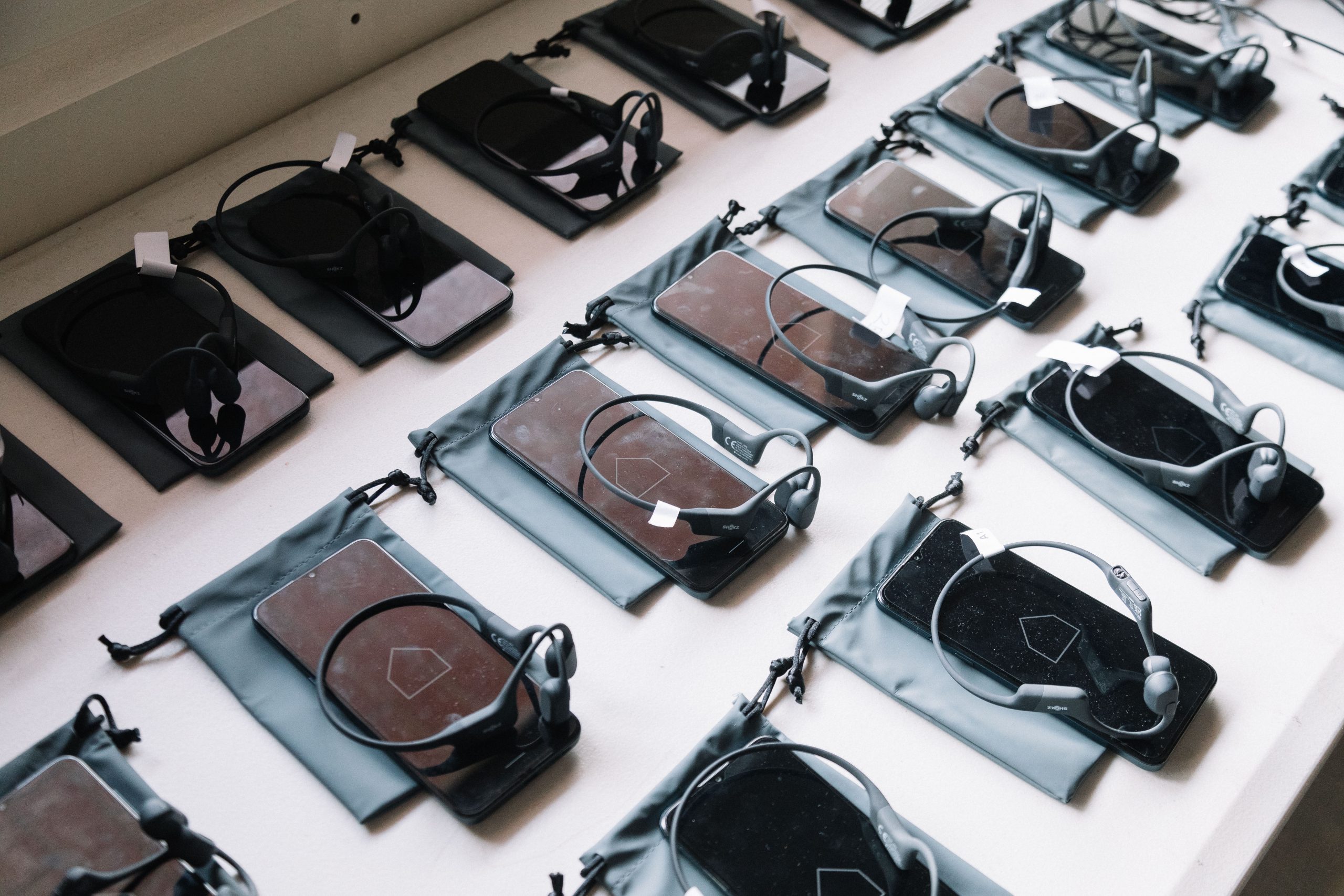

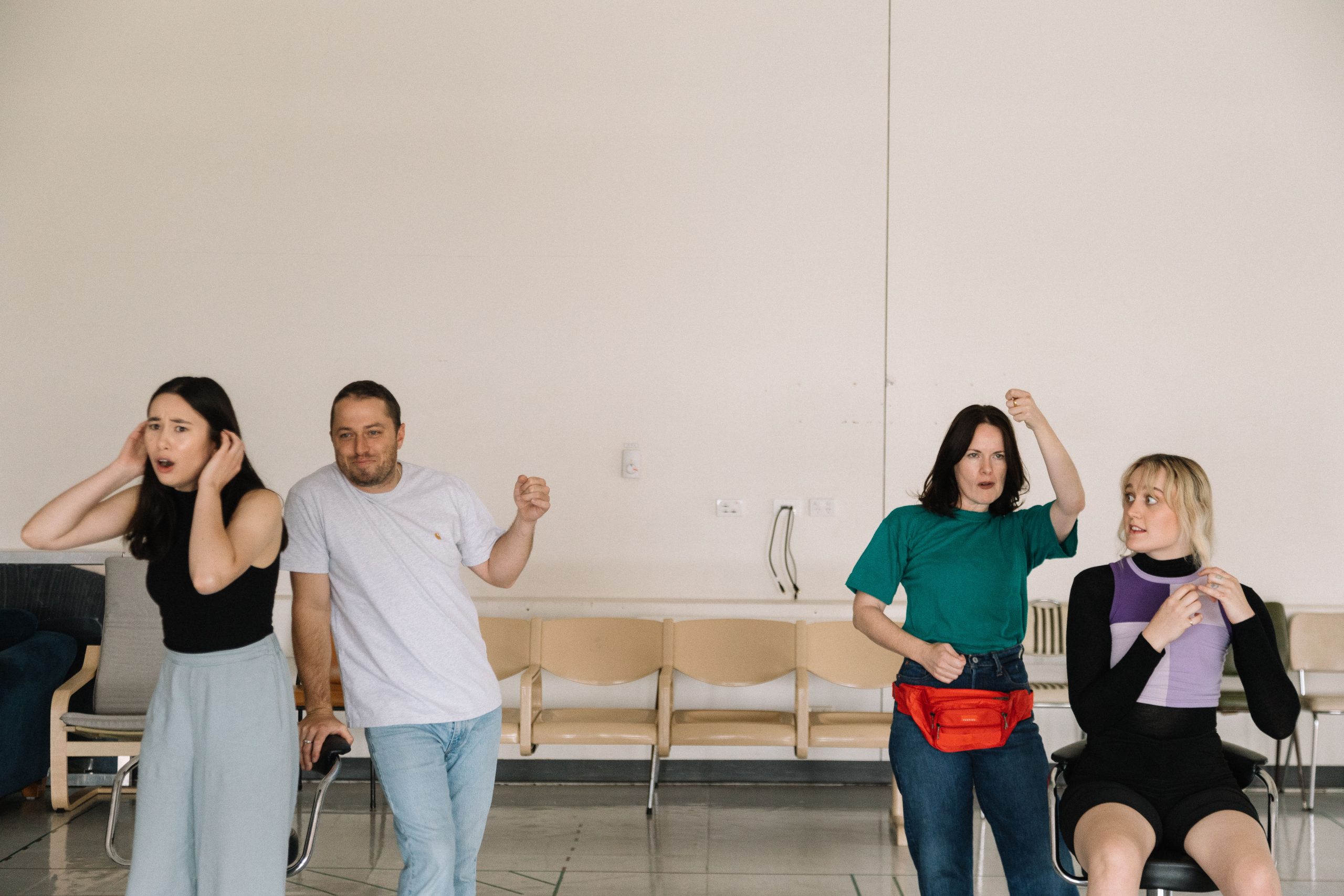
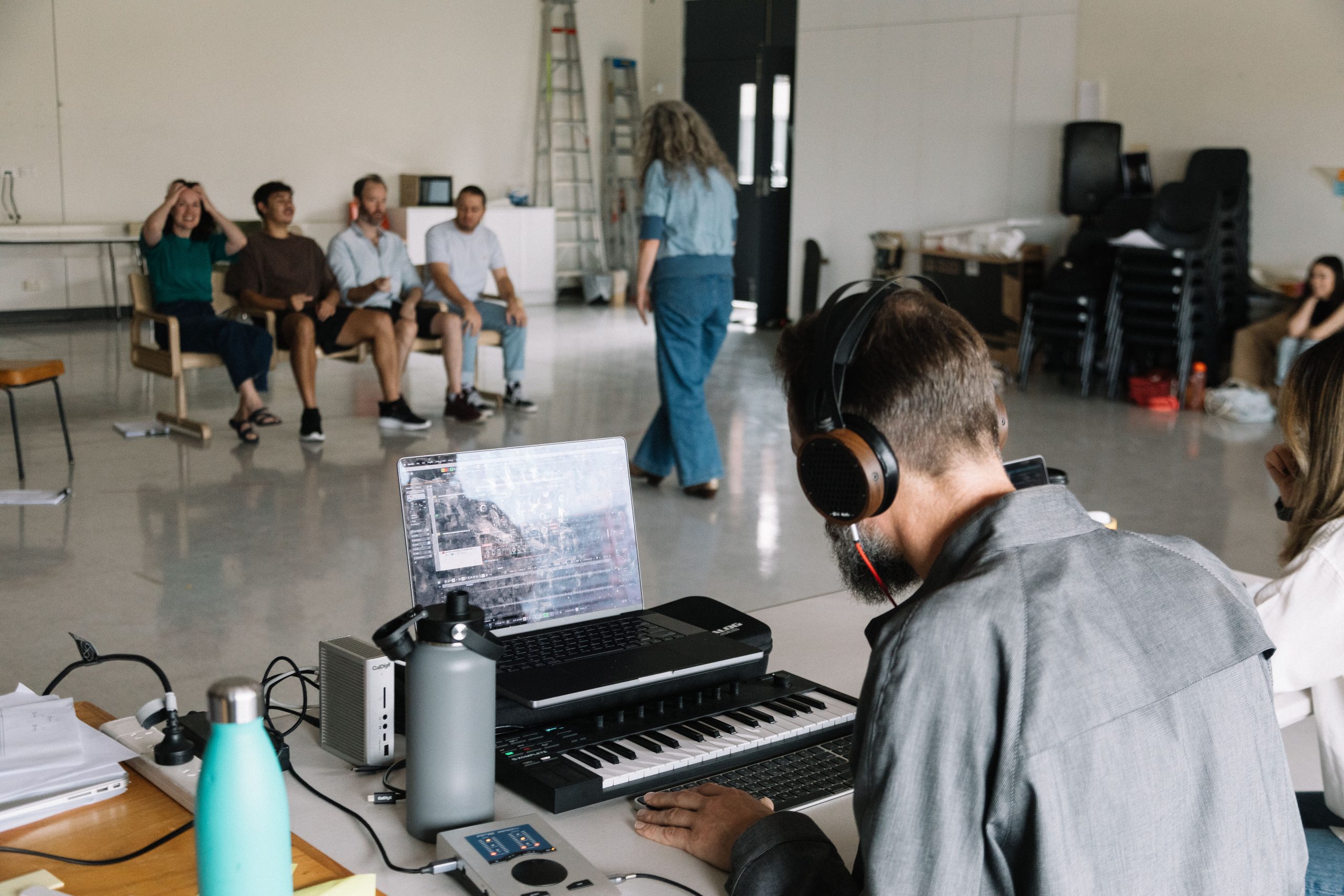

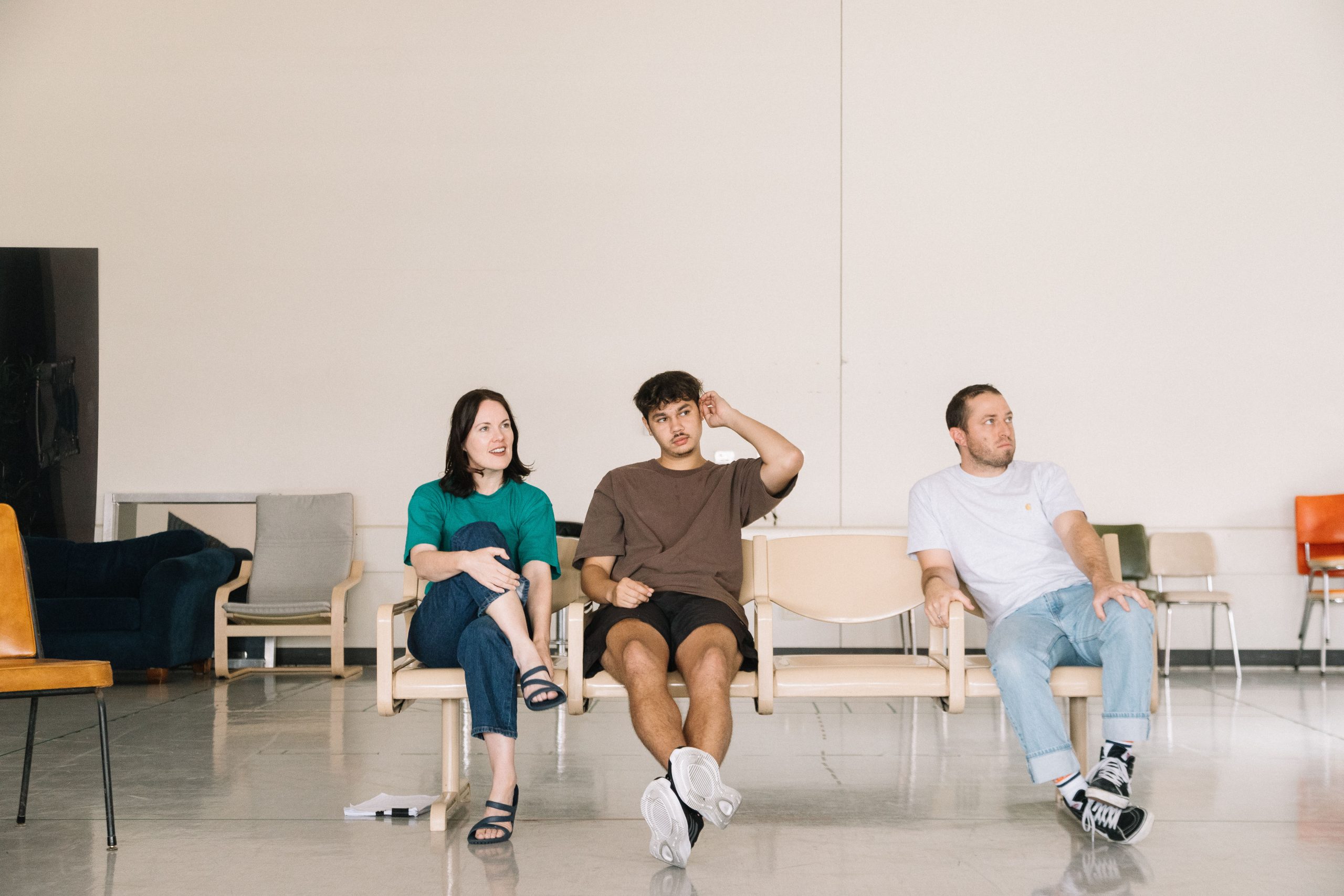
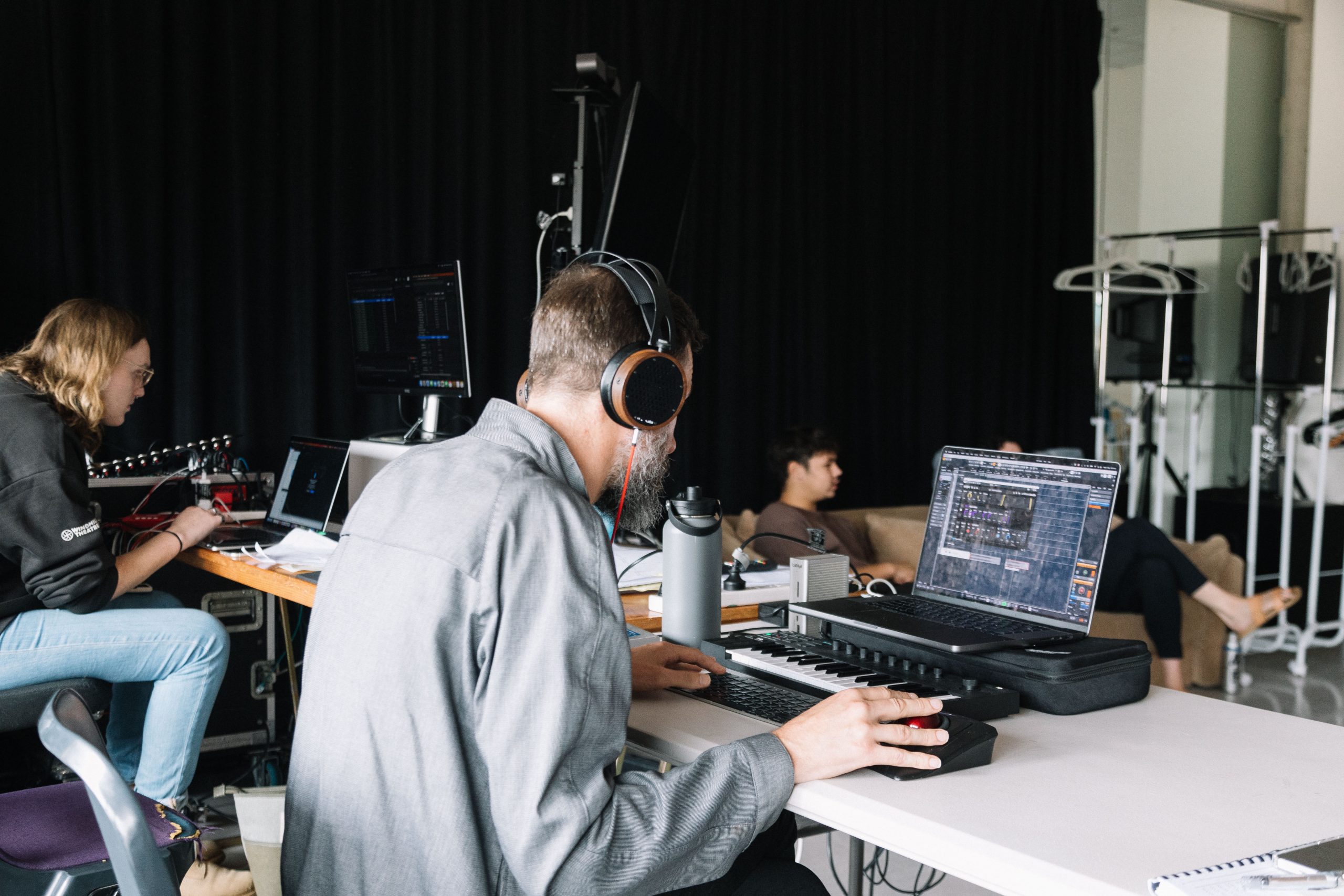
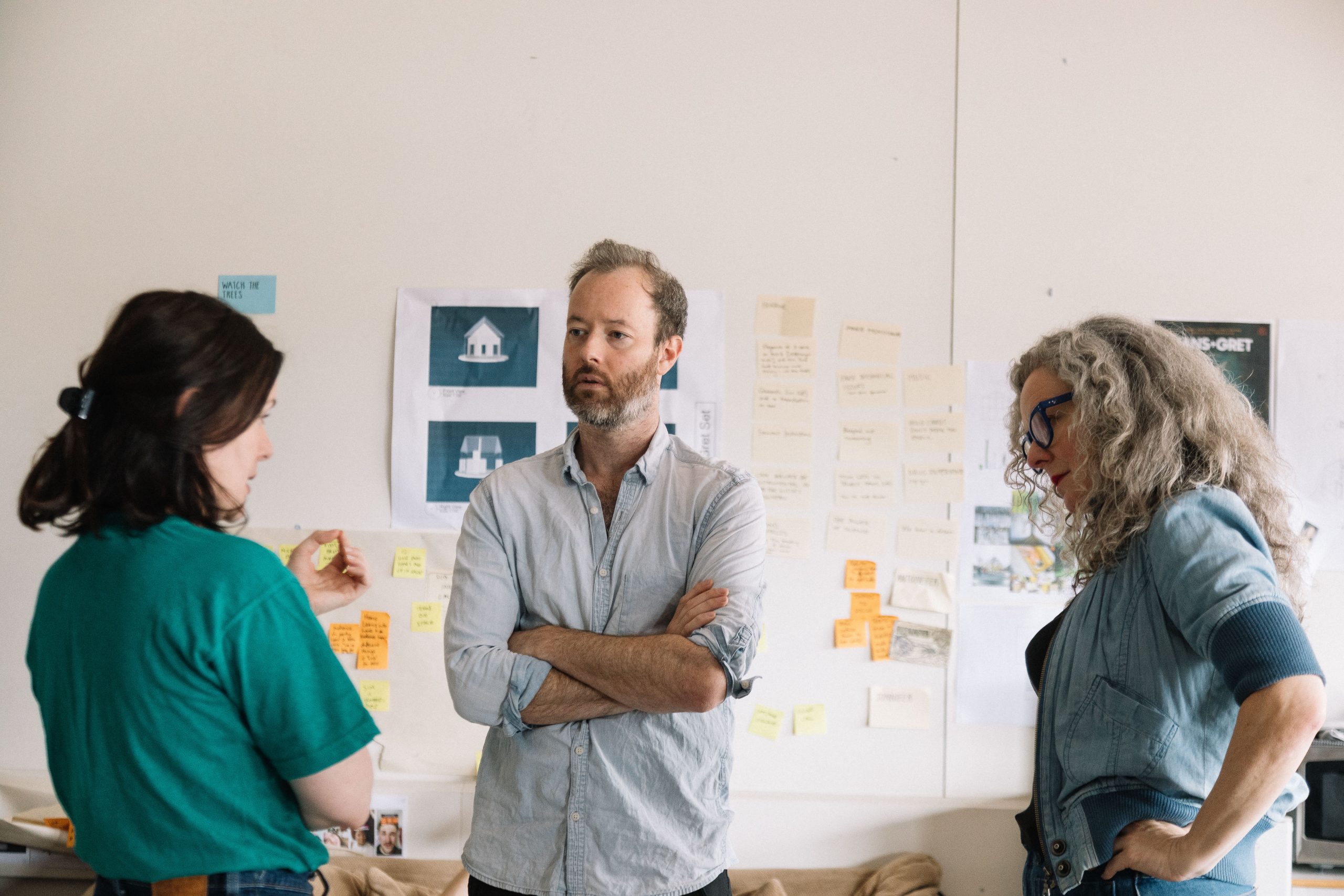
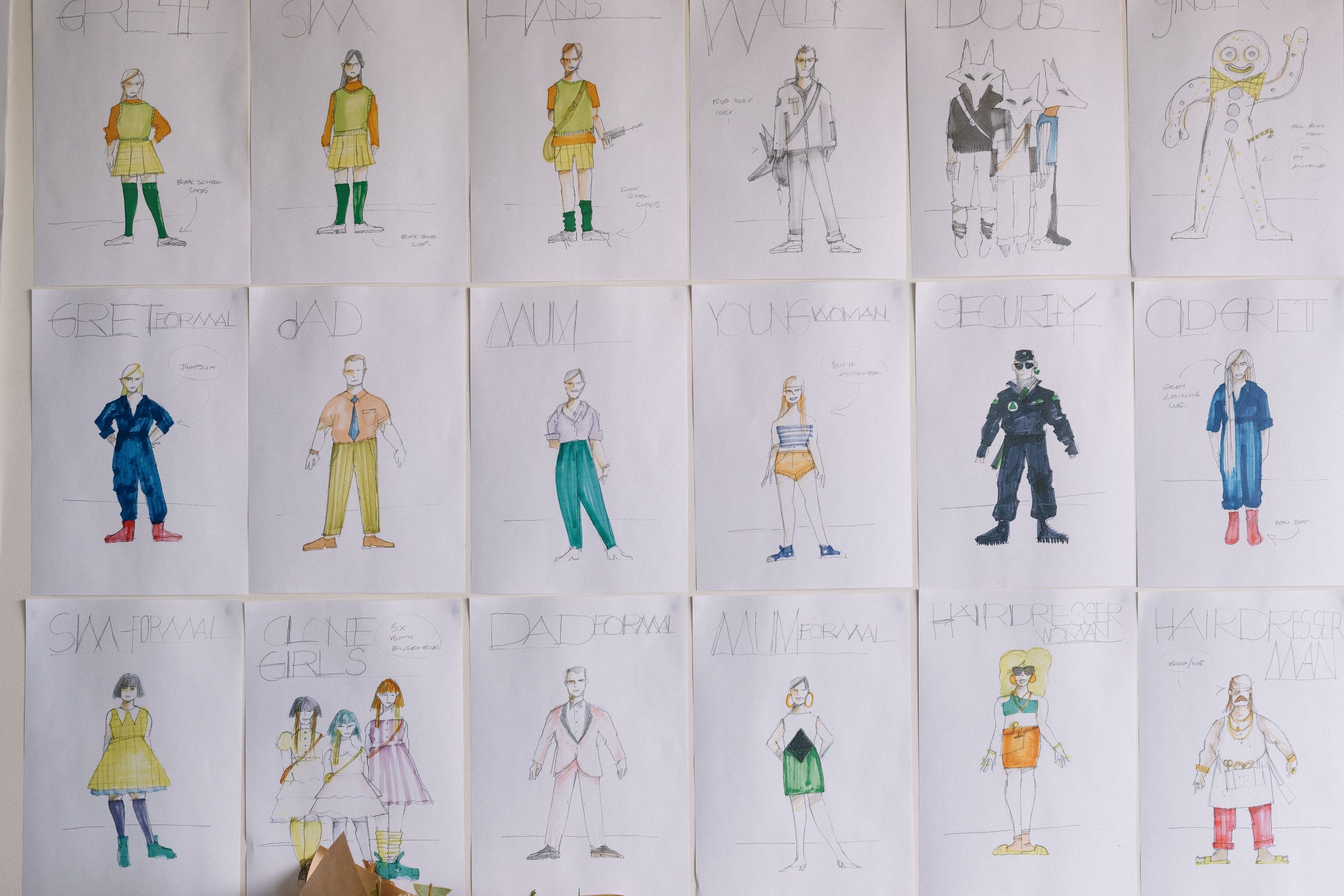
Coming of Age
There are two versions of ‘Coming of Age’ explored in Hans and Gret, that of the young people and that of the middle aged. Gret is desperate to assert herself beyond the boundaries of her family and experience the outside world. These boundaries are metaphorical and concrete, as they live in a gated community. She is growing up and finding her own identity, which is at odds with parental and community expectations. She desires the freedoms that come with being older and begins to experience ‘rights of passage’ into adolescence/young adulthood, such as first love, sex, her formal, parties and drugs. Hans is also seeking freedom by developing and using technology to explore the world outside the gates. Then we have Dad, and particularly Mum, who are ill at ease with themselves and their inevitable ‘coming of older age’ and observe the youthful advantages that their children hold – vitality, potential, beauty, individualism. They want the freedoms that come with being younger. There is also a disruption to the regular hierarchy between the generations in Hans and Gret, where old people become young, young people become old and the balance is lost.
The Family Home
The symbol of the home in Hans and Gret is strong, as it is in the original story. Generally, the family home is a symbol of love, safety and stability. In the original story the home lacks these things and instead is a place of poverty and starvation, housing an unkind mother figure and a weak father. The characters are simple. Hans and Gret goes deeper with the characters and the challenges they face, and as a result the family home is more complex. It is gated, with strict rules to keep them all safe from threats from the outside, giving them a false sense of security, but to some it feels like a jail. The family home morphs to become the nightmarish and cannibalistic gingerbread house and a cage, a lair. It is an ever-changing space, a place of uncertainty and eventually becomes a place of horror.
Manipulation
Hans and Gret live in a dystopian world where manipulation is used as a method of control ensuring that people don’t step outside of the gated community or break the codes of behaviour. These codes of behaviour are supposed to instil trust in the community, and contribute to a sense of safety. The characters must conform and are coerced into doing so by knowing that they are being spied upon, all the while being convinced it is for their own good. Mum wants to conform to the point of losing herself. Gret wants to break rules in order to find herself. Gret is a rebel, who wants to make personal choices – to stand out, to explore, to experience the world outside of the gates.
Truth
Throughout the show, truth is manipulated in different ways. Often mediated by technology and the witch’s powers. This happens both in terms of the narrative being expressed and also for the audience, with the very nature of the reality being depicted onstage being slippery and multiple. In the modern age, we’re constantly fed half-truths, non-truths, and things we really want to believe are true on a daily basis. Hans and Gret asks us to consider why this is, how this happens and what effect this has on us as individuals and as a community.
Elevated Horror
On Adapting Hans and Gret for the Modern Age
On the day we head to Windmill Theatre Company’s office, there is a horror movie being shot in their building. The halls are pulsing with bloody red lights. Our chats about their new show are punctuated by screams and wails and the frantic echo of footsteps as they bounce off the walls around us.
“They’re really going for it out there… that’s so fitting because we’re doing the same thing in the rehearsal room,” laughs Windmill’s incoming Artistic Director Clare Watson after a scream comes from the shoot. She’s in Adelaide to direct Hans and Gret, a new work which takes the traditional Hansel and Gretel fairy tale and transforms it into anarchic psychological thriller. The work, co-produced with experience design studio Sandpit, is set to spook teenage audiences when it premieres at the 2023 Adelaide Festival.
“Horror,” says Watson, “is difficult. Because what it relies on is the audience’s imagination, actually. It’s like… you’re really asking the audience to do most of the work because it’s about accessing their deepest fears.”
She points to a crack in the ceiling, “The trick with that onstage is doing less. You see that crack. I could, if I wanted to, make that terrifying with my imagination. I wouldn’t have to do a lot. It could be a sound or a flash of something… it’s about restraint.”
Based on an original concept by director Rosemary Myers, Hans and Gret is breathless take on the classic that sees two teenagers come of age in a world that has miraculously reversed the ageing process and unpacks the horror at the core of the work.
“I think the original story is full of terror. The idea of bringing horror to the story is not something we’re placing on it,” says Watson, “Horror sits deeply and fundamentally underneath this story. Even in advance of the Grimm fairy tale in the 1300’s. The idea of famine and the truth of children being ejected from the home and left to die in the woods is scary. It’s all wonderfully terrifying.”
Key to the success of the adaptation has been embracing the originality of award-winning writer Lally Katz, who is returning to the Australian stage with the work.
“Lally’s ability to create a the familiar/unfamiliar and give us this sense of the uncanny is remarkable. There’s something about her work that, to me, that presents a story and the truth of character intention and it’s often hilarious… but at the same time you can come away from it and have that unsettled feeling. It’s like when you’ve had one of those morning nightmares that wakes you up and then the whole day you can’t quite shake it? It’s like just below the surface of your reality.
“Lally’s work shows us that the film between what’s really familiar and what’s really scary, or a nightmare is really thin,” she says, “It’s so much fun. I feel like that’s how her work functions best.”
Getting under the audience’s skin is very much a literal part of the work. Sam Haren and the team from Sandpit have designed a sound system using SHOKZ bone conduction headphones that will deliver personalised missives from the tale’s infamous villain directly into your skull.
“The experience we’re creating is that every audience member when they come and see the show wears a pair of bone conduction headphones, which don’t cover the ear but sit just in front of it,” says Haren, “The way that these headphones send sound to you is that they’re vibrating through the bones in your skull and in the bones in your inner ear.
“They’re mainly used for cycling and swimming because they allow you to hear the world around you in addition to the audio they’re transmitting. But we’re using them to deliver this personalised layer of audio for the show in addition to the space as you would normally in a theatre show. It feels quite exciting given that all of this is connected to this witch character who is trying to seduce and control us. It feels very close. Too close.”
In addition to the use of the headphones, each audience member will receive a smartphone device that will additionally mediate and augment the truth of what is being presented onstage.
“In a way what we’re doing with the technology is interrogating one of the cultural rifts that we’re – especially young people – currently dealing with; that technology can be very effective in creating delineated versions of the world that may, in no way be true, but because it’s filtered to us in such a personalised way, we accept it as such.
“Dramatically, we’re finding there’s really exciting things there where the witch can be speaking to everyone at once, but also speaking to individual audience members at different points in the show.”
Hans and Gret, then, presents audiences with a challenge to rethink what their time in the theatre could be, placing them at close quarters with the horror at the centre of the story.
“The function of the witch in any fairy tale is put people under a spell. To manipulate. We’re thinking about ways we can use this technology to cast a spell and shift the audience experience to the whim of the witch,” says Watson.
“There’s a lot of fun to be had in upending that world and in the realisation that the idea of storytelling itself is really slippery. That a narrator can be unreliable.
“When you come to the theatre and you sit in your seat, you’re getting a very individual experience. Because you’re seeing it on a particular night which is different to another night and you sit in a seat that’s different to another seat,” she says, “And what we’re doing with the technology is amplifying that experience. You’re getting that collective communal experience of theatre, and you’ll have the very intimate experience of someone speaking directly in your ear.”
Suddenly there’s another scream from the shoot just down the hall. We both jump out of our seats a bit and Clare laughs, “It’s going to be a real rollercoaster ride… we might even get a few screams for the audience.”
Produced by Windmill Theatre Company. Developed and compiled by Drama Education Specialist Astrid Pill and Windmill Theatre Company.
The activities and resources contained in this document are designed for educators as the starting point for developing more comprehensive lessons for this work.
© Copyright protects this Education Resource. Except for purposes permitted by the Copyright Act, reproduction by whatever means is prohibited. However, limited photocopying for classroom use only is permitted by educational institutions.
This resource is proudly supported by the South Australian Department for Education and the Lang Foundation.